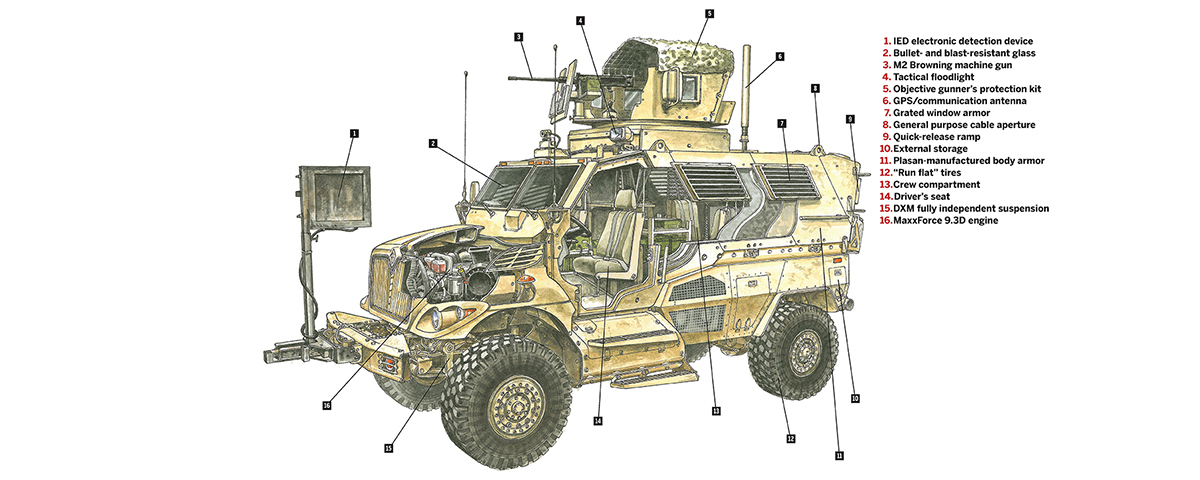When the United States invaded Afghanistan in October 2001 and Iraq in March 2003, no one anticipated protracted guerrilla conflicts or the emergence of the improvised explosive device (IED) as the insurgents’ principal weapon. Within months of the invasions IEDs had accounted for about half of American combat deaths and were regarded as the number one threat. With vehicle protection limited to a relative handful of up-armored HMMWVs—better known as Humvees—the U.S. Army and Marine Corps had to develop a new breed of mine-resistant, ambush-protected (MRAP) vehicles. Their designers began by studying the experiences of the Rhodesian Bush War (1964–79) and the South African Border War (1966–89), which had prompted the development of such mine-resistant pioneers as the Pookie, Hippo, Okapi, Mamba and Casspir. Common principal features included a hull raised as far as possible above the ground and V-shaped undercarriage armor to deflect the blast of an IED or mine.
By 2007 American and coalition forces in Afghanistan and Iraq were fielding a variety of MRAPs. Navistar International’s MaxxPro remains the flagship of the fleet. A 19-ton four-wheel-drive behemoth with an armored V-hull 14 inches off the ground, it is typically crewed by a driver, vehicle commander and gunner, with four troops seated in the rear, ready to dismount as needed. Given its high center of gravity, the vehicle soon drew complaints about poor off-road performance and its susceptibility to rollovers. In response Navistar produced the MaxxPro Dash, a smaller, lighter version with a tighter turning radius. To date Navistar has rolled out 9,000 MaxxPros of both models for service in Afghanistan and Iraq. MH





